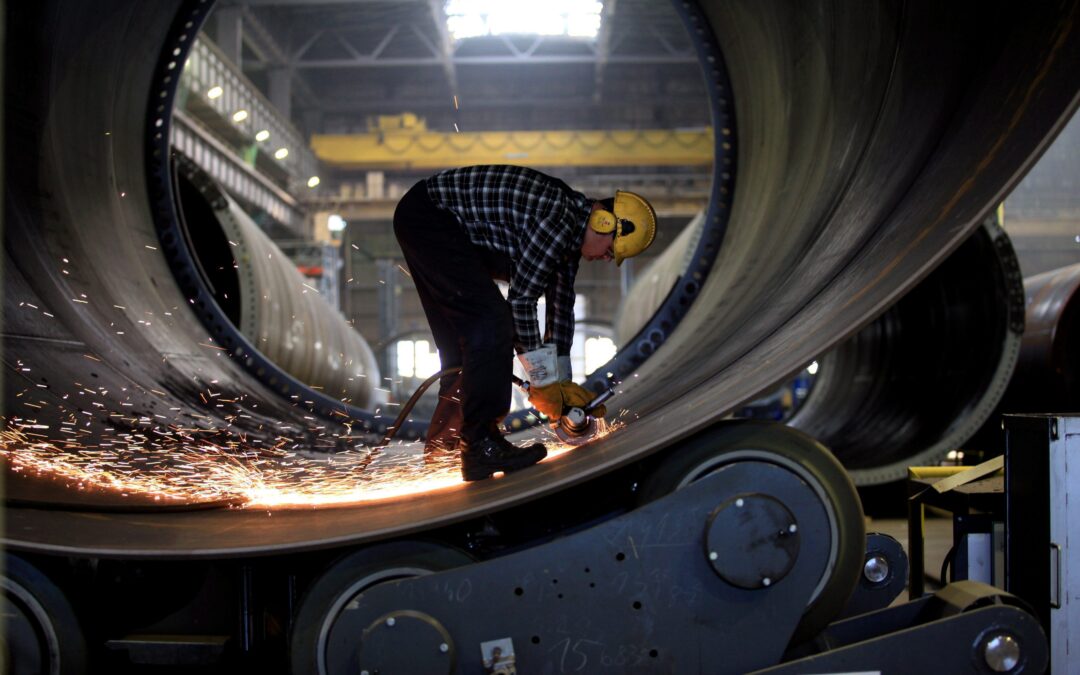Poland’s wind energy sector has appealed to the government to allow delays in the completion of new wind farms. It says the war in Ukraine has caused many Ukrainian construction workers in Poland to return to defend their homeland, and has also increased costs of transport, fuel and materials.
“For employers for whom Ukrainians formed the nucleus of their team, the war in Ukraine means considerable organisational problems and delays in implemented investments, including in wind farm construction,” wrote the Polish Wind Energy Association (PWEA).
“Many Ukrainian workers – including those working for construction firms implementing renewable energy projects – have left to fight for their homeland,” continued the statement. “Construction sites are deserted.”
Before Russia’s invasion of Ukraine, over a million Ukrainians lived in Poland. However, since the outbreak of war, significant numbers of them have returned home to fight.
This has had a particularly large impact on the male-dominated sectors of construction, industrial processing and transport, where an estimated 30% of Ukrainians employed in Poland worked, reports Business Insider Polska. Around 11% of construction workers and 13% in transport were Ukrainian before the war, estimates BNP Paribas bank.
Far larger numbers of refugees have travelled in the other direction, with over 2.5 million crossing from Ukraine into Poland since the start of the war. But, although the government has sought to expedite their path into the labour market, as of Monday this week only around 30,000 had started working.
Of those, around 75% are women. Among all the refugees, around half are children and only 3.5% are men of working age.
One in five small and medium-sized businesses in Poland have had to limit operations as a result of the war in Ukraine.
Transport and logistics firms – many of which operate over the eastern border and employ Ukrainians – report particular disruption https://t.co/w3rCkICPwH
— Notes from Poland 🇵🇱 (@notesfrompoland) March 23, 2022
The PWEA notes that, as well as a dearth of construction workers, transport has become more expensive and the prices of fuel and construction materials have increased. In February alone, the cost of building materials rose almost 30%, it calculates. The weakening of the zloty has also made things worse.
“As a result, the wind industry, despite exercising all necessary diligence, is flagging problems with the schedule of the implementation of its projects,” said PWEA president Janusz Gajowiecki.
As such, his organisation has appealed in a letter to the prime minister to allow for delays of “at least 18 months” in the completion of wind projects that won public procurement procedures in 2020 and 2021.
There had previously been some optimism in Poland’s wind sector. The war in Ukraine appeared to have given greater urgency to government plans to scrap a rule introduced in 2016 that had made the construction of new onshore turbines extremely difficult.
Even before then, January saw the industry set a new record for the amount of power generated by wind. Turbines supplied around a third of Poland’s electricity needs at times that month. Over the whole of last year, onshore wind provided around 8% of Poland’s electricity.
Last month, the government pledged to end Russian energy imports by the end of this year. The prime minister said that this would include “an extensive plan to create renewable energy” in order to fill resultant gaps in energy supplies.
Main image credit: Renata Dabrowska / Agencja Gazeta

Daniel Tilles is editor-in-chief of Notes from Poland. He has written on Polish affairs for a wide range of publications, including Foreign Policy, POLITICO Europe, EUobserver and Dziennik Gazeta Prawna.




















